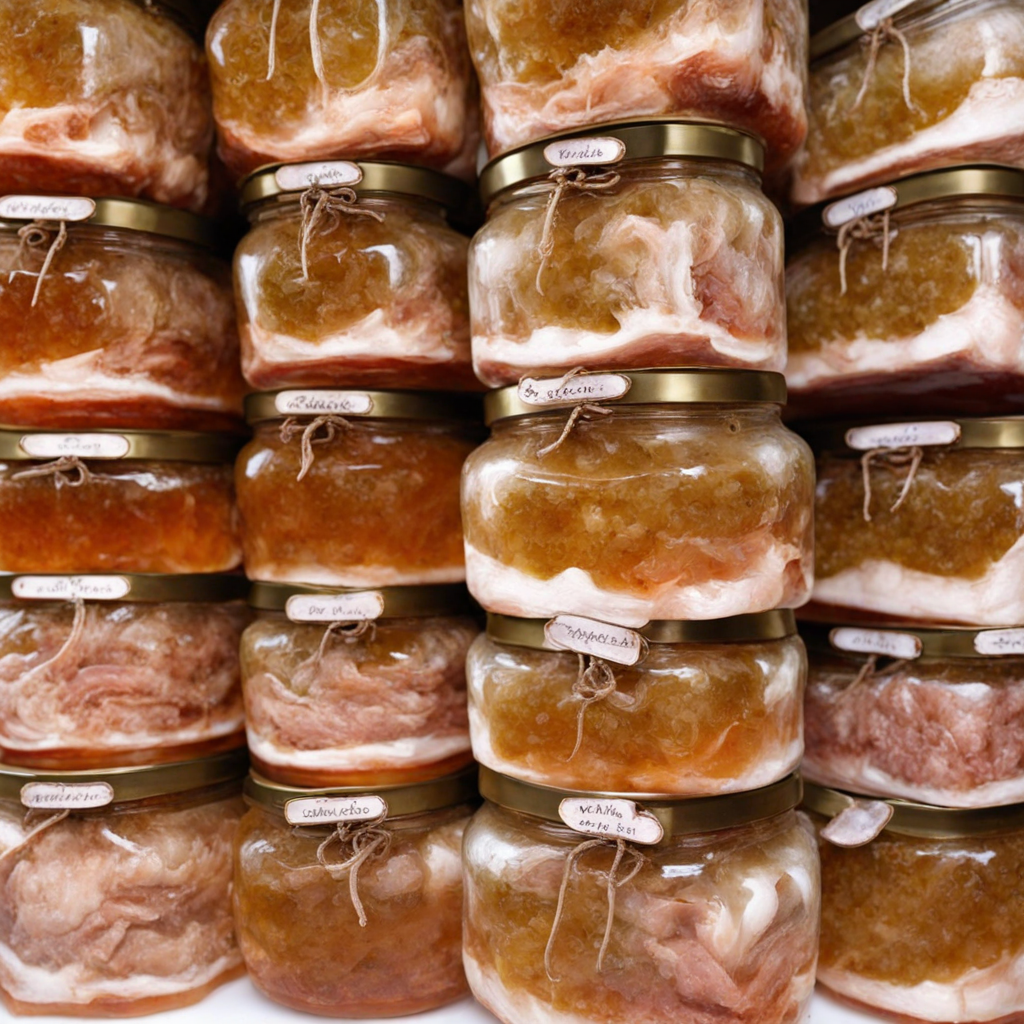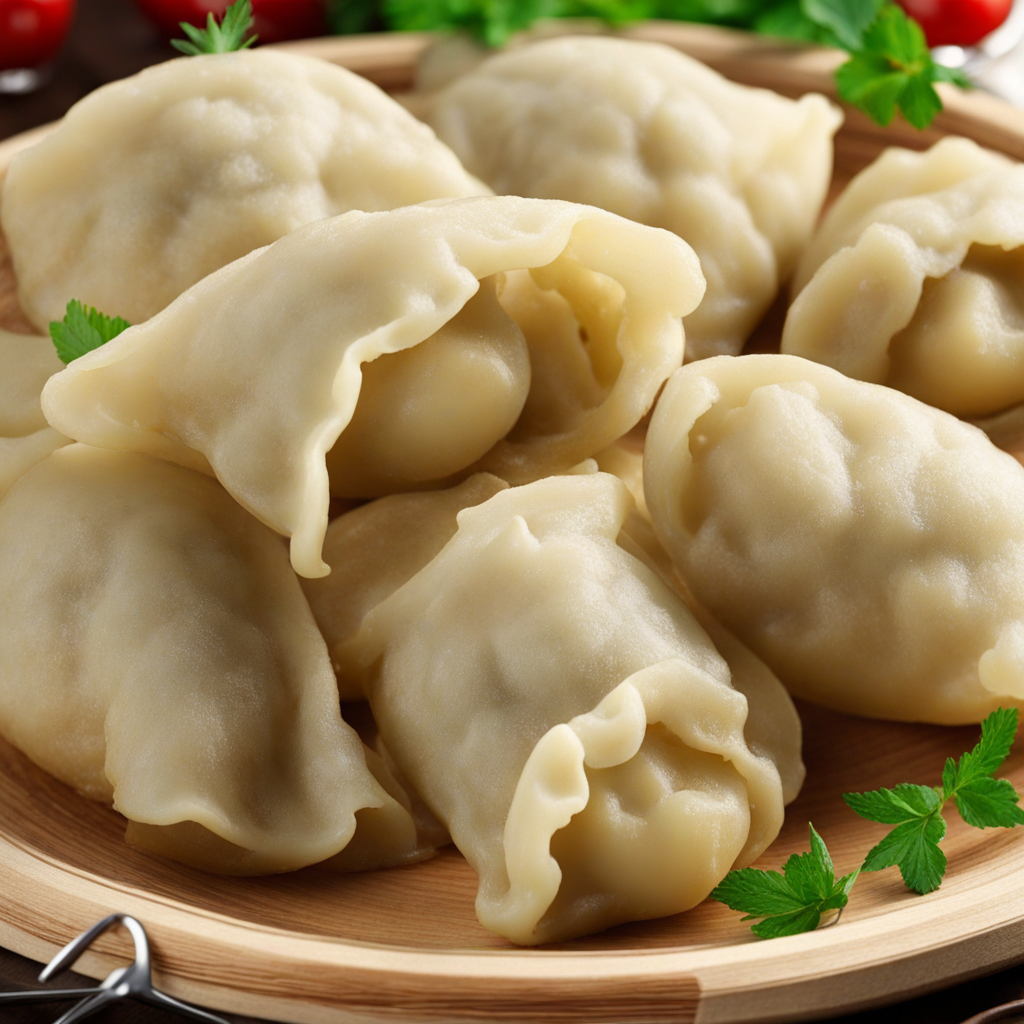Syrniki
Syrniki are delightful Ukrainian cottage cheese pancakes that embody the perfect harmony of texture and flavor. Made primarily from tvorog, a type of fresh cheese, these golden-brown delights are often mixed with just a hint of flour, sugar, and eggs to create a batter that is both tender and slightly crumbly. The outside is typically pan-fried to achieve a crispy, golden crust, while the inside remains soft and creamy, offering a comforting contrast that is simply irresistible. Each bite transports you to a cozy Ukrainian kitchen, where tradition and warmth come together in every dish. The beauty of syrniki lies not only in their comforting taste but also in their versatility. Traditionally served as a breakfast dish, they can be enjoyed warm with a variety of toppings that enhance their flavor. A drizzle of honey or a dollop of sour cream adds a sweet or tangy touch, while fresh berries or fruit preserves can introduce a burst of freshness. For those who love a hint of indulgence, a sprinkle of powdered sugar elevates the experience further, making syrniki a delightful treat for any time of day. As you take your first bite of syrniki, you'll appreciate how this humble dish captures the essence of Ukrainian comfort food. It's a celebration of simple ingredients transformed into something extraordinary, reflecting the rich culinary heritage of Ukraine. Whether enjoyed as a leisurely breakfast or a delightful dessert, syrniki promise a comforting yet exciting culinary adventure that invites you to savor each moment and flavor.
How It Became This Dish
The History of Syrniki: Ukraine's Beloved Cheese Pancakes Syrniki, a beloved dish in Ukraine and across Eastern Europe, are small, round pancakes made primarily from tvorog (a type of fresh curd cheese similar to ricotta), eggs, and flour. They are often served for breakfast or as a dessert, accompanied by sour cream, fruit preserves, or honey. Their delightful texture and rich flavor have made them a staple in Ukrainian cuisine, but their origins, cultural significance, and evolution over time tell a story that extends far beyond the kitchen table. #### Origins: The Roots of Syrniki The history of syrniki can be traced back to the agricultural practices of ancient Slavic peoples. Dairy farming was central to their way of life, necessitating the utilization of milk in various forms, including cheese-making. The practice of turning milk into cheese dates back thousands of years, and as these traditions spread through the region, different cultures adapted them to create their own unique versions of cheese dishes. Tvorog, the main ingredient in syrniki, has been a staple in Slavic diets for centuries. It is a versatile ingredient, rich in protein and easily digestible, making it a popular choice among peasants and the working class. The method of making tvorog involves souring milk, then heating it gently until the curds form, a technique that has been passed down through generations. This simple yet effective process laid the foundation for the creation of syrniki. The earliest recorded recipes for syrniki are found in 17th-century Ukrainian cookbooks, where they are often referred to as "syrnye oladyi" or "cheese pancakes." However, it is likely that variations of this dish existed long before these records were made, as home cooks adapted local ingredients and personal tastes. #### Cultural Significance: More Than Just a Dish Syrniki are not merely a delicious food item; they are deeply embedded in Ukrainian culture and tradition. Traditionally enjoyed as a breakfast dish, syrniki reflect the agrarian lifestyle of rural communities, where families would rise early to tend to their farms. The dish symbolizes sustenance and comfort, often prepared by mothers and grandmothers who would pass down their recipes to the next generation. In Ukrainian folklore, food often carries symbolic meanings. Syrniki, with their round shape, are seen as symbols of prosperity and fertility—a testament to the abundance of dairy farming. They are commonly served during family gatherings, holidays, and celebrations, reinforcing bonds between family members and friends. The dish's simplicity and the ease of preparation make it accessible to all, ensuring its place in everyday life. Another significant aspect of syrniki is their regional variation. While the basic recipe remains consistent, different areas of Ukraine and neighboring countries have made unique adaptations. In the western regions, for instance, syrniki may be enriched with additional ingredients like raisins or flavored with vanilla, while in other areas, they might be served alongside seasonal fruits or flavored syrups. This diversity showcases the adaptability of syrniki within Ukrainian cuisine and reflects the local agricultural produce. #### Development Over Time: A Culinary Evolution As Ukraine underwent significant historical changes, so too did syrniki. The late 19th and early 20th centuries saw the rise of urbanization and industrialization, which altered culinary practices. With more people moving to cities, traditional family recipes began to be adapted for quicker preparation and convenience. Syrniki became a popular item in cafes and restaurants, evolving from a home-cooked dish to a beloved staple of urban dining. The Soviet period (1922-1991) further influenced the dish's development. During this time, the promotion of collective farming and state-owned enterprises led to a standardization of food production. As a result, tvorog became widely available, making syrniki a common dish across the Soviet Union, not just in Ukraine. The dish gained popularity in other Slavic nations, with variations appearing in Russian and Belarusian cuisine. This cross-cultural exchange enriched the dish's identity, allowing it to flourish beyond its original borders. In contemporary times, syrniki have experienced a renaissance within the culinary world, as chefs and home cooks alike rediscover traditional recipes and experiment with new flavors. The advent of international cuisine influences has led to innovative adaptations, sometimes incorporating ingredients like pumpkin, zucchini, or different types of cheese. Health-conscious trends have also brought forth gluten-free alternatives, using almond or coconut flour instead of traditional wheat flour. The rise of social media platforms has played a crucial role in this culinary evolution. Food bloggers and influencers share their syrniki recipes, often showcasing a variety of presentation styles and flavor combinations. This has rekindled interest in traditional Ukrainian cuisine among younger generations, encouraging a revival of homemade syrniki. #### Conclusion: A Dish with Enduring Legacy Syrniki are more than just a delightful dish; they embody the history, culture, and resilience of the Ukrainian people. From their humble origins in the farms of ancient Slavs to their status as a cherished culinary treasure, syrniki have adapted to changing times while maintaining their essential character. As they continue to evolve, syrniki remain a symbol of comfort, family, and tradition—a testament to the enduring legacy of Ukrainian cuisine. Today, whether enjoyed in a rustic village home or a trendy urban café, syrniki connect generations, cultures, and histories. They remind us of the significance of food in our lives—how it nourishes not only our bodies but also our traditions and relationships. In every bite of these golden, crispy pancakes, one can taste the rich tapestry of Ukrainian heritage, woven together through time, love, and the simple joy of sharing a meal.
You may like
Discover local flavors from Ukraine







